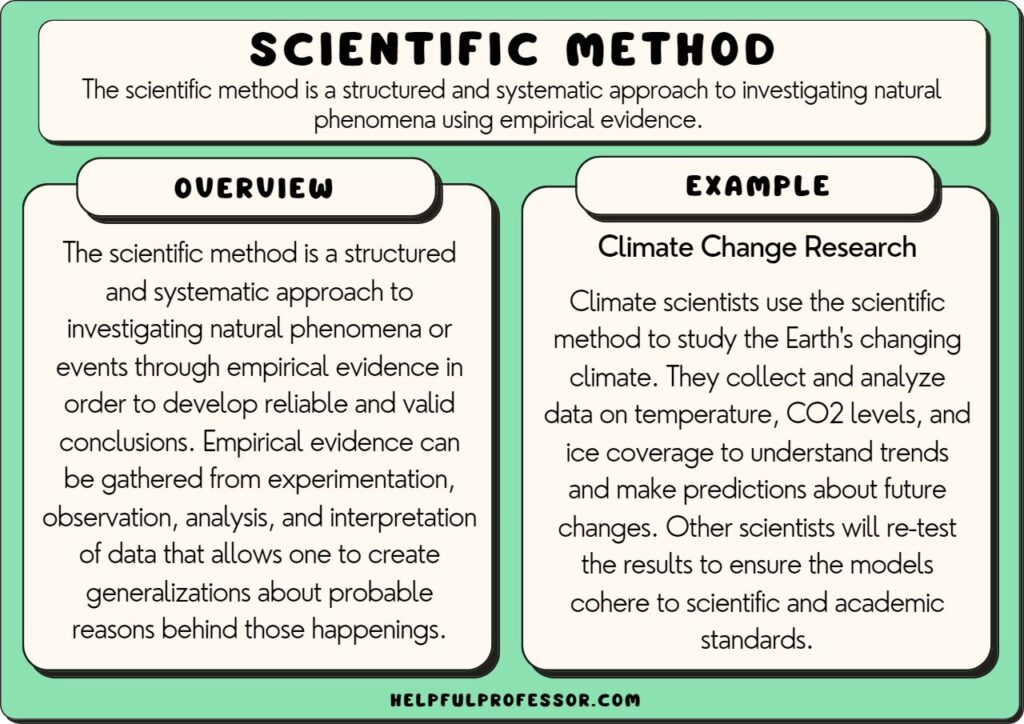

Written by Viktoriya Sus (MA)

Viktoriya Sus is an academic writer specializing mainly in economics and business from Ukraine. She holds a Master’s degree in International Business from Lviv National University and has more than 6 years of experience writing for different clients. Viktoriya is passionate about researching the latest trends in economics and business. However, she also loves to explore different topics such as psychology, philosophy, and more.
| September 4, 2023
Reviewed by Chris Drew (PhD)

This article was peer-reviewed and edited by Chris Drew (PhD). The review process on Helpful Professor involves having a PhD level expert fact check, edit, and contribute to articles. Reviewers ensure all content reflects expert academic consensus and is backed up with reference to academic studies. Dr. Drew has published over 20 academic articles in scholarly journals. He is the former editor of the Journal of Learning Development in Higher Education and holds a PhD in Education from ACU.


The scientific method is a structured and systematic approach to investigating natural phenomena using empirical evidence.
The scientific method has been a lynchpin for rapid improvements in human development. It has been an invaluable procedure for testing and improving upon human ingenuity. It’s led to amazing scientific, technological, and medical breakthroughs.
Some common steps in a scientific approach would include:
Comprehension Questions: As you read through this article, our editor Chris will pose comprehension and critical thinking questions to help you get the most out of this article. Teachers, if you assign this article for homework, have the students answer these questions at home, then use them as stimuli for in-class discussion.
The scientific method is a structured and systematic approach to investigating natural phenomena or events through empirical evidence.
Empirical evidence can be gathered from experimentation, observation, analysis, and interpretation of data that allows one to create generalizations about probable reasons behind those happenings.
As mentioned in the article published in the journal Nature,
“As schoolchildren, we are taught that the scientific method involves a question and suggested explanation (hypothesis) based on observation, followed by the careful design and execution of controlled experiments, and finally validation, refinement or rejection of this hypothesis” (p. 237).
The use of scientific methods permits replication and validation of other people’s scientific analyses, leading toward improvement upon previous results, and solid empirical conclusions.
Voit (2019) adds that:
“…it not only prescribes the order and types of activities that give a scientific study validity and a stamp of approval but also has substantially shaped how we collectively think about the endeavor of investigating nature” (p. 1).
This method aims to minimize subjective biases while maximizing objectivity helping researchers gather factual data.
It follows set procedures and guidelines for testing hypotheses using controlled conditions, assuring optimum accuracy and relevance in concluding by assessing a range of aspects (Blystone & Blodgett, 2006).
Overall, the scientific method provides researchers with a structured way of inquiry that seeks insightful explanations regarding evidence-based investigation grounded in facts acquired from an array of fields.
Comprehension Checkpoint: Based on the above discussion, write your own paraphrased definition of the scientific method. Some keywords you might use include “hypothesis”, “evidence”, and “study.”
Comprehension Checkpoint: Identify a time in your life when you created a hypothesis then sought out empirical evidence to test your hypothesis. It doesn’t have to be a true scientific study, but any informal situation where you used empirical evidence to test your beliefs.
The scientific method can be traced back to ancient times when philosophers like Aristotle used observation and logic to understand the natural world.
These early philosophers were focused on understanding the world around them and sought explanations for natural phenomena through direct observation (Betz, 2010).
In the Middle Ages, Muslim scholars played a key role in developing scientific inquiry by emphasizing empirical observations.
Alhazen (a.k.a Ibn al-Haytham), for example, introduced experimental methods that helped establish optics as a modern science. He emphasized investigation through experimentation with controlled conditions (De Brouwer, 2021).
During the Scientific Revolution of the 17th century in Europe, scientists such as Francis Bacon and René Descartes began to develop what we now know as the scientific method observation (Betz, 2010).
Bacon argued that knowledge must be based on empirical evidence obtained through observation and experimentation rather than relying solely upon tradition or authority.
Descartes emphasized mathematical methods as tools in experimentation and rigorous thinking processes (Fukuyama, 2021).
These ideas later developed into systematic research designs, including hypothesis testing, controlled experiments, and statistical analysis – all of which are still fundamental aspects of modern-day scientific research.
Since then, technological advancements have allowed for more sophisticated instruments and measurements, yielding far more precise data sets scientists use today in fields ranging from Medicine & Chemistry to Astrophysics or Genetics.
So, while early Greek philosophers laid much groundwork toward an observational-based approach to explaining nature, Islam scholars furthered our understanding of logical reasoning techniques and gave rise to a more formalized methodology.
Comprehension Checkpoint: In your notes, write down the key contributors to the scientific method (listed above) and note their main contribution. Try to ensure it’s paraphrased and, as an extension, find information about these contributors from other websites or textbooks so you can triangulate information from multiple sources.
While there may be variations in the specific steps scientists follow, the general process has six key steps (Blystone & Blodgett, 2006).
Here is a brief overview of each of these steps:
The first step in the scientific method is to identify and observe a phenomenon that requires explanation.
This can involve asking open-ended questions, making detailed observations using our senses or tools, or exploring natural patterns, which are sources to develop hypotheses.
A hypothesis is an educated guess or proposed explanation for the observed phenomenon based on previous observations & experiences or working assumptions derived from a valid literature review.
The hypothesis should be testable and falsifiable through experimentation and subsequent analysis.
In this step, scientists perform experiments to test their hypothesis while ensuring that all variables are controlled besides the one being observed.
The data collected in these experiments must be measurable, repeatable, and consistent.
Researchers carefully scrutinize data gathered from experiments – typically using inferential statistics techniques to analyze whether results support their hypotheses or not.
This helps them gain important insights into what previously unknown mechanisms might exist based on statistical evidence gained about their system.
Based on their data analyses, scientists reach conclusions about whether their original hypotheses were supported by evidence obtained from testing.
If there is insufficient supporting evidence for their ideas – trying again with modified iterations of the initial idea sometimes happens.
Once results have been analyzed and interpreted under accepted principles within the scientific community, scientists publish findings in respected peer-reviewed journals.
These publications help knowledge-driven communities establish trends within respective fields while indirectly subjecting papers reviews requests boosting research quality across the scientific discipline.
Comprehension Checkpoint: After communicating your results, what should you do next? (Hint: many scientific researchers, like David A. Kolb, see the scientific method as a cyclical process rather than linear).
The scientific method is important because it helps us to collect reliable data and develop testable hypotheses that can be used to explain natural phenomena (Haig, 2018).
Here are some reasons why the scientific method is so essential:
Comprehension Checkpoint: Identify five ways the scientific method has had an impact on your life. Consider areas like healthcare, education, and engineering.
The scientific method is an essential tool that has revolutionized our understanding of the natural world.
By emphasizing rigorous experimentation, objective measurement, and logical analysis- scientists can obtain more unbiased evidence with empirical validity.
Utilizing this methodology has led to groundbreaking discoveries & knowledge expansion that have shaped our modern world from medicine to technology.
The scientific method plays a crucial role in advancing research and our overall societal consensus on reliable information by providing reliable results, ensuring we can make more informed decisions toward a sustainable future.
As scientific advancements continue rapidly, ensuring we’re applying core principles of this process enables objectives to progress, paving new ways for interdisciplinary research across all fields, thereby fuelling ever-driving human curiosity.
Betz, F. (2010). Origin of scientific method. Managing Science, 21–41. https://doi.org/10.1007/978-1-4419-7488-4_2
Blystone, R. V., & Blodgett, K. (2006). WWW: The scientific method. CBE—Life Sciences Education, 5(1), 7–11. https://doi.org/10.1187/cbe.05-12-0134
De Brouwer , P. J. S. (2021). The big r-book: From data science to learning machines and big data. John Wiley & Sons, Inc.
Fukuyama, F. (2012). The end of history and the last man. New York: Penguin.